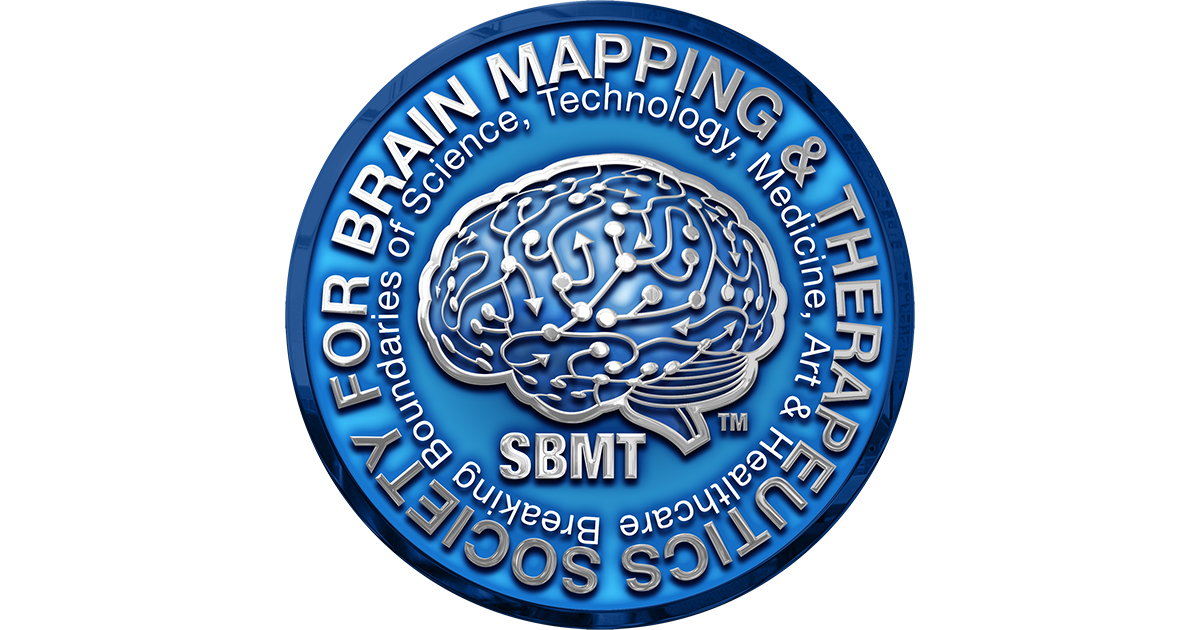Personalized Molecular Neurobiology of Brain Mapping of Global Pain and Mental Illness
A special issue of Journal of Personalized Medicine (ISSN 2075-4426). This special issue belongs to the section "Mechanisms of Diseases".
Deadline for manuscript submissions: closed (30 November 2022) | Viewed by 44884

Special Issue Editors
2. Department of Psychiatry, Wright State University Boonshoft School of Medicine, Dayton, OH 45435, USA
3. Division of Addiction Research & Education, Center for Sports, Exercise, & Mental Health, Western University Health Sciences, Pomona, CA 91766, USA
4. Department of Molecular Biology, Adelson School of Medicine, Ariel University, Ariel, Israel
5. Division of Personalized Pain Therapy Research & Education, Center for Advanced Spine Care of Southern Arizona, Tucson, AZ 85712, USA
6. The Kenneth Blum Behavioral & Neurogenetic Institute, LLC., Austin, TX 78701, USA
Interests: addiction research; personalized medicine; genetic factors influencing addiction and behavioral disorders employing nutrigenomics and epigenetics; addiction recovery; pain therapy; mental health
Special Issues, Collections and Topics in MDPI journals
Interests: brain mapping
Interests: developmental neurobiology; brain mapping; stem cell; molecular targeted therapy; head and neck surgery
Interests: addiction medicine; stress system; pathophysiology of severe neuropsychiatric disorders; psychiatry
Special Issues, Collections and Topics in MDPI journals
Interests: translational addiction neuroscience
Special Issues, Collections and Topics in MDPI journals
2. Department of Orthopaedics, Fundación Universitaria Sanitas, Bogotá 111321, Colombia
3. Department of Orthopedics, Hospital Universitário Gaffre e Guinle, Universidade Federal do Estado do Rio de Janeiro, Rio de Janeiro 21941-590, RJ, Brazil
Interests: spinal surgery; spinal disorders; thoracic and lumbar spine
Special Issues, Collections and Topics in MDPI journals
Special Issue Information
Dear Colleagues,
The special issue is initiated by the Brain Mapping Society (www.WorldBrainMapping.Org).
Background & history of this topic:
The disease model of all mental illnesses has resulted in an exhaustive neurobiological and neurogenetic literature involving thousands of peer reviewed studies. Sadly, worldwide mental health statistics show that the prevalence of mental illnesses has increased significantly over the past decade. One of the reasons for the rise in the number of mental health issues is the stigma and lack of awareness and support surrounding mental health problems. With more and more people battling symptoms and signs of mental issues, and coronavirus wreaking havoc, it is essential that as scientists and clinicians worldwide, in the spirit of sharing our unique knowledge across all related disciplines and psychopathologies, we encourage submissions to this Special Issue. Table 1 represents the unfortunate facts related to mental illness in 2021.
|
Table 1. 2021 Mental Illness facts. |
|
We appreciate the fact that Mental health disorders are complex and can take many forms. While some controversy still exists, the underlying source of the worldwide data presented is typically in accordance with the WHO’s International Classification of Diseases (ICD-10). This broad definition incorporates many forms, including depression, anxiety, bipolar, eating disorders, and schizophrenia. Importantly, the Global Burden of Disease study aggregates substance use disorders (alcohol and drug use disorders) with mental health disorders in many statistics. It is also becoming clear that even non-substance behavioral addictions (e.g. gambling, over-eating, eating disorders, internet and smart phone seeking), have been shown to have similar neurobiological and genomic overlap with typical SUDs. The current literature demonstrates that mental health disorders are common everywhere.
Aim and scope of the Special Issue:
AIM
Improving the awareness, recognition, support, and treatment of this range of disorders should be an essential focus of global health. As a result, it is the aim and scope of this Special Issue.
SCOPE
Along these lines, it is noteworthy that the highest rate of imprisonment has been marked in the states with the least access to mental health care and poor mental health awareness, such as Alabama, Arkansas, and Texas. Accordingly, these states also have higher incarceration rates overall. Those imprisoned who also suffer from mental health problems usually first became involved with the law through minor offenses such as disorderly conduct. High levels of poverty and poor physical health are probably the main contributing factors when it comes to these shocking statistics.
In addition, it is now known that Schizophrenia, a notably severe mental health condition, is characterized by disturbances in reasoning and emotions and an overall twisted perception of reality. The data suggest that this chronic condition is quite widespread in Australia (with around 150,000–200,000 patients suffering from it). However, it is relatively rare worldwide, according to most facts about schizophrenia.
Despite the misconceptions of those who lack accurate information on mental health disorders, there is no correlation between mental illnesses and character flaws. It is indeed prudent to point out that although children are not the most common sufferers of mental disorders, they do experience mental problems, and it happens more frequently than people may assume. Due to the misconception that children cannot become depressed, anxious, schizophrenic, etc., many of them are misdiagnosed or their state is considered typical childish behavior.
In May 2019, the World Health Organization announced that being transgender would no longer be classified as a mental health issue as it had been defined under ICD-10. Under ICD-11, gender incongruence, or “a marked and persistent incongruence between a person’s experienced gender and assigned sex,” is no longer classified among the mental and behavioral disorders. Hopefully, this will have a positive impact on transgender mental health statistics, which in 2018 indicated that transgender people have a four-fold increased risk of depression.
Our goal is to promote the advancement of the science and knowledge surrounding pain issues, unwanted problems related to both substance and non-substance addictions, and all mental health-related illnesses to benefit society and improve lives.
Cutting-edge research:
From a scientific perspective, global mental health statistics suggest that there is more to mental illness than merely having too much or too little of certain chemicals in the brain resulting in impaired neurotransmitter signaling in, for example, the brain reward circuitry. Certainly, there is overlap or co-occurrence of addictive behaviors. There are other factors that contribute: stress, upbringing, genetic vulnerability, other medical conditions, etc. Cutting edge research related to the neurobiological and genetic etiological roots of all mental health will especially resonate as being an important topic to address in this Special Issue.
It is also important to perform cutting-edge research on addiction medicine. Addiction scientists and clinicians face an incredible challenge in combatting the current opioid and alcohol use disorder (AUD) pandemic worldwide. Significant progress has been made; however, the death toll from narcotic overdose reached 100,000 fatalities in the United States alone in 2021. The National Institute on Drug Abuse (NIDA) and The National Institute on Alcohol Abuse and Alcoholism (NIAAA) continue to struggle with the generation of novel approaches to combat the severity of the current substance abuse epidemic. Specifically, world data in 2017 revealed that for alcohol use disorder there were 107 million people afflicted and for SUD (excluding alcohol) there were 71 million.
Non-cancerous pain treatment is challenging for primary care medicine. By 2014, an NIH survey estimated that 25.3 million adults had pain every day for the preceding 3 months. In 2016–2017, many thousands of people died from opiate/opioid overdoses, especially the synthetic opioid fentanyl, which is more than 50 times more potent than other prescription opioids. To combat this growing threat to public safety, in 2016 new guidelines for prescribing opioids to chronic pain patients were issued by the Center for Disease Control (CDC). Morphine milligram equivalents declined by 29% in 2017, but more than 64,000 people still died from narcotic overdoses, leading to a decrease in national life expectancy. Currently, nearly 116 million Americans suffer from chronic pain, according to the National Institute on Drug Abuse (NIDA). Those who suffer from severe pain are also likely to have worse overall physical and mental health status.
What kind of papers we are soliciting:
Understanding the need to overcome this terrible global crisis, we the editors, along with the staff of the Journal of Precision Medicine, which is prestigious and PUBMED INDEXED with an official impact factor of 4.95. We hereby encourage high quality articles related to neurobiology, genomics, and clinical research. While we are reaching out to the scientific community at large, each submission will undergo rigorous peer review to help guide the final published product. Each accepted submission will be open access, with a one-time charge of 1,007 USD to cover costs, which is a 50% discount off the regular article processing fee. The type of manuscripts we are looking for include editorials, perspectives, original research, and systematic reviews. There are no limitations to the number of authors. A minimum wordcount of 3000 per article is a journal requirement. The deadline for submission is November 30th 2022 at 5 PM USA Eastern Standard Time.
We are interested in a wide range of topics, including (but not limited to) the following:
women’s issues; men’s issues; abuse and violence; addictive disorders; reward deficiency; cannabis use disorder; ADHD; ADD; Tourette’s; autism; adjustment disorder; adolescents; aging issues; alcohol use and abuse; Alzheimer’s disease; anger; anxiety disorders; attachment issues; bipolar disorder; bullying; children issues; conduct disorders; conflict resolution; major depression; dissociative disorders; drug use and abuse; eating disorders; family issues; grief and loss; HIV/AIDS; learning issues; PTSD; schizophrenia; personality disorders; obesity; obsessive compulsive disorder (OCD); pain management; panic disorder; parenting issues; suicide and self-harm; phobias; schizophrenia; sexual disorders; sleep issues; spirituality; stress; and trauma.
Please join us by submitting your important work and be part of the caring community of scientists across the globe working tirelessly to overcome the suffering of unfortunate victims.
Prof. Dr. Kenneth Blum
Dr. Babak Kateb
Dr. Vicky Yamamoto
Prof. Dr. Igor Elman
Dr. Mark S. Gold
Dr. Kai-Uwe Lewandrowski
Guest Editors
Manuscript Submission Information
Manuscripts should be submitted online at www.mdpi.com by registering and logging in to this website. Once you are registered, click here to go to the submission form. Manuscripts can be submitted until the deadline. All submissions that pass pre-check are peer-reviewed. Accepted papers will be published continuously in the journal (as soon as accepted) and will be listed together on the special issue website. Research articles, review articles as well as short communications are invited. For planned papers, a title and short abstract (about 100 words) can be sent to the Editorial Office for announcement on this website.
Submitted manuscripts should not have been published previously, nor be under consideration for publication elsewhere (except conference proceedings papers). All manuscripts are thoroughly refereed through a single-blind peer-review process. A guide for authors and other relevant information for submission of manuscripts is available on the Instructions for Authors page. Journal of Personalized Medicine is an international peer-reviewed open access monthly journal published by MDPI.
Please visit the Instructions for Authors page before submitting a manuscript. The Article Processing Charge (APC) for publication in this open access journal is 2600 CHF (Swiss Francs). Submitted papers should be well formatted and use good English. Authors may use MDPI's English editing service prior to publication or during author revisions.
Keywords
- personalized medicine
- molecular neurobiology
- brain mapping
- global pain
- addiction and mental illness
- reward processing
- brain reward circuitry
- induction of dopamine homeostasis
- genomics
- neurotransmitters










